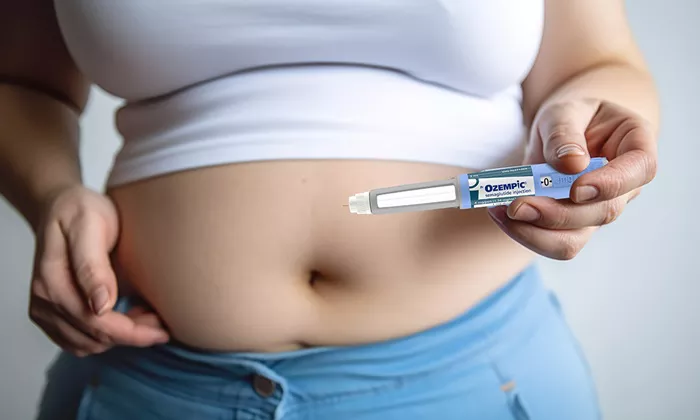A recent survey by the American Academy of Facial Plastic and Reconstructive Surgery (AAFPRS) reveals that the use of glucagon-like peptide-1 receptor agonist (GLP-1 RA) medications for weight loss is significantly reshaping the field of facial aesthetics.
The 2024 AAFPRS Annual Online Survey, distributed to members in December 2024, highlights several key trends. While traditional procedures such as rhinoplasty, facelifts, and blepharoplasties continue to be the most common surgical treatments, the survey found a notable 50 percent increase in the number of fat grafting procedures performed over the past year. This surge is largely attributed to patients seeking solutions for “Ozempic face,” a condition resulting from the facial volume loss associated with rapid weight loss from GLP-1 RA medications. As a result, patients are increasingly turning to fat grafting to restore lost volume and enhance facial contours.
The growing popularity of GLP-1 RA medications is also driving demand for non-surgical options. Approximately 25 percent of facial plastic surgeons predict that the use of these medications will lead to an uptick in nonsurgical treatments like injectable fillers and skin tightening procedures, as patients look for less invasive methods to address the aesthetic changes linked to weight loss. Moreover, 10 percent of survey participants reported personally prescribing GLP-1 RA medications to their patients.
Other trends noted in the survey include a rising interest in facial rejuvenation treatments as part of “menopause makeovers,” as well as the increasing popularity of regenerative medicine. Fifty-seven percent of respondents anticipate that regenerative treatments, such as platelet-rich plasma and exosome-based therapies, will play a major role in future aesthetic innovations.
The survey also reveals a growing trend among men seeking cosmetic procedures. Ninety-two percent of respondents reported treating male patients, with blepharoplasty, rhinoplasty, and facelifts being the most commonly requested treatments. Non-surgical procedures, including neurotoxins, fillers, and skin treatments, are also in high demand among male patients, signaling a shift toward broader acceptance of aesthetic treatments and a changing approach to self-care.
Dr. Patrick Byrne, president of the AAFPRS, emphasized the growing trend of male participation in cosmetic treatments, stating, “This trend highlights the growing acceptance of aesthetic treatments among men and their changing approach to self-care.”
Related topic:
Gogo Manzini Undergoes Multiple Cosmetic Surgeries for Self-Improvement
Lisa Rinna Responds to Plastic Surgery Criticism by Reversing Procedures
Nicole Kidman’s “Pixie Ears” Spark Facelift Rumors


